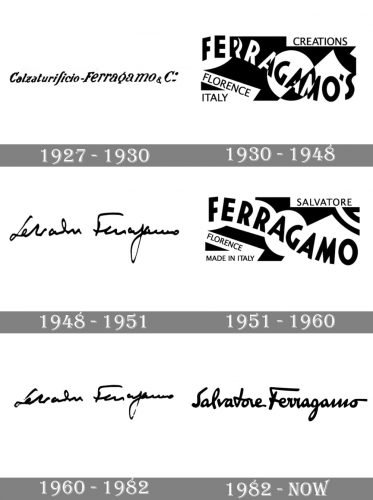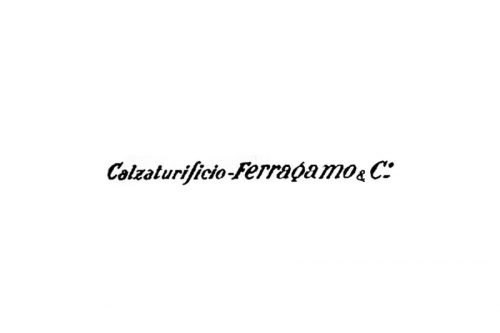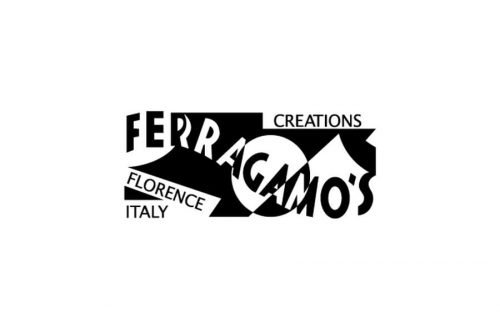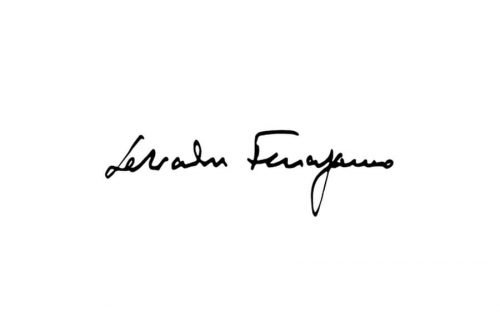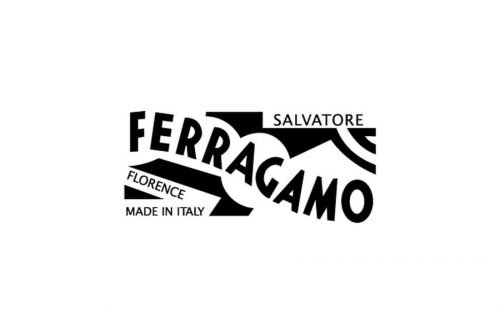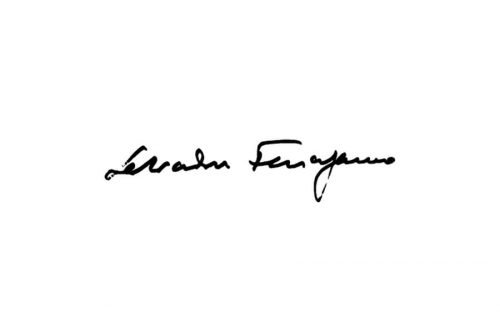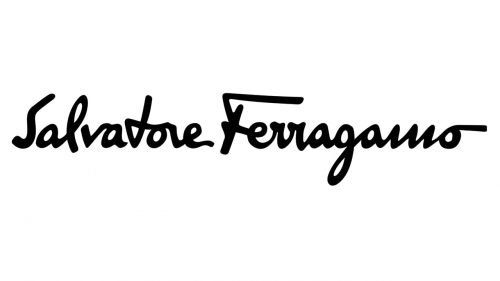Salvatore Ferragamo is a luxury fashion brand, named after its designer. The label was founded in 1928 in Florence, Italy. The brand is famous for its high-end shoes, clothing and accessories.
Meaning and history
Salvatore Ferragamo is the iconic brand, which became synonymous to the most stylish and luxurious footwear and accessories. The brand has an interesting visual identity history, as it’s been switching between two logos during a long time.
1927 — 1930
The very first logo of the brand was a handwritten name of the company “Calzaturificio Ferragamo & Co”, with the surname of the designer written in bigger letters, with an interesting letter “G”.
1930 — 1948
In 1930 Lucio Venna creates an outstanding futuristic logo for the brand. It is a monochrome palette rectangular with geometric figures on the background and a wordmark “Ferragamo’s creations Florence Italy”.
It is a super artistic and creative logo, which shows the brand’s expertise in style and fashion.
1948 — 1951
The typographic logo is in use during this time period. It features designer’s signature, Salvatore Ferragamo in custom handwriting with bold thick lines of the lettering. The monochrome palette is elegant and distinct.
1951 — 1960
The Lucio Venna’s logo is back, but slightly modified. The name of the designer, Salvatore, appears on the emblem, and the lower part of the logo was saying “Made in Italy”.
1960 — 1982
After Ferragamo’s death in 1960, the brand decides to come back to his signature for the logo. The famous “F” becomes a brand signifier and is placed on tags and packaging.
1982 — Today
The current Salvatore Ferragamo logo is a refined designer’s signature in a custom recognizable typeface. It is bold and confident, using two options for its color palette — monochrome or red and white. The iconic brand’s packaging features dark red background and a white logo lettering on it, while the tags can be both black and red logotype on a white background.
Symbol
The so-called Gancini, which is basically the “hook” present on most of Ferragamo’s products (including bags, jewelry, and accessories), was inspired by the gate of Palazzo Spini Feroni. Although the symbol has never reached the status of the official Salvatore Ferragamo logo, it’s the fashion house’s signature.



